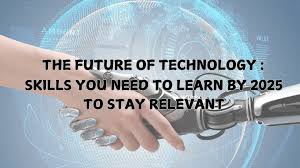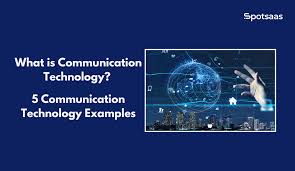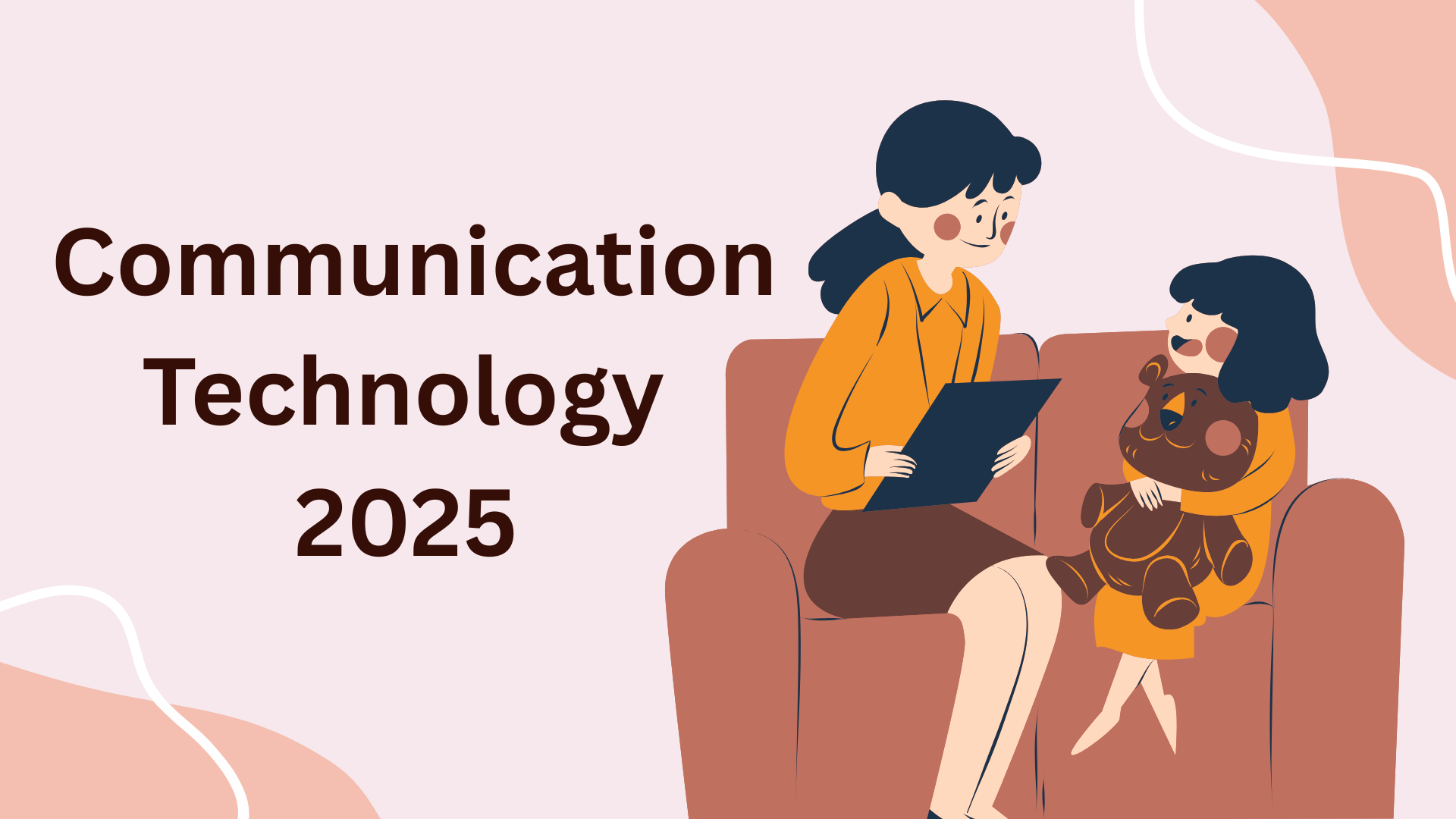Introduction
Have you ever questioned why your grandmother can now video chat with you from anywhere in the world and send memes that are on par with your own? Or visualize this: More than 5.3 billion people will be online by 2025, sending and receiving data, videos, and messages at speeds that would make the Pony Express seem like a snail race. The unsung hero that transforms our world into a massive, chatty village is communication technology. That’s its magic.
The foundation of how we connect, share, and work together in the modern world is communication technology, which includes everything from digital communication apps to wireless communication networks. Distance is no longer an issue thanks to telecommunications innovations like 5G, AI-powered chatbots, and virtual reality meetings.
The foundation of how we connect, share, and work together in the modern world is communication technology, which includes everything from digital communication apps to wireless communication networks. Distance is no longer an issue thanks to telecommunications innovations like 5G, AI-powered chatbots, and virtual reality meetings. The dominance of mobile data is expected to propel the communication services market to an astounding US$1.5 trillion in 2025, according to Statista. With advancements in mobile and internet technology, this boom isn’t slowing down—rather, it’s accelerating.
But why is this important to everyone, from retirees learning about TikTok to tech-savvy teenagers? because telemedicine can save lives, increase productivity, and bridge generations thanks to communication technology. We’ll break down its essence, examine 2025 trends like AR/VR and sustainable networking, look at practical uses, laugh at the challenges (such as when autocorrect converts “meeting” to “meowing”), and take a look at a holographic future in this post. Prepare yourself for an interesting journey through the world of communication technology, regardless of whether you’re a professional, student, or just someone who detests missed calls. You might even come to appreciate your phone’s pocket dials by the end!
What is Communication Technology?
Communication technology is the commonplace toolkit that enables us to chat, share cat videos, and make sales without getting up from the couch. It’s not some futuristic jargon. The hardware, software, and systems that enable information exchange—from simple telephones to sophisticated data transmission networks—are fundamentally referred to as communication technology. Consider it the digital glue that holds our interconnected world together, combining internet, wireless, and telecommunications technologies to create smooth interactions.
By 2025, communication technology will encompass everything from cloud-based platforms for digital communication to smartphones that facilitate mobile technology. It has developed to manage large data flows, and networking protocols guarantee that your Zoom call won’t lag. It is revolutionary for all ages: Seniors use apps to stay in touch, adults use them for work, and children use them to learn. Ironically, without it, messy and unreliable carrier pigeons would be our only option!
But really, by lowering barriers, communication technology increases efficiency. It’s the ecosystem that makes international cooperation possible, not just the tools.
Evolution of Comm Tech
From smoke signals to holographic chats, the history of communication technology is reminiscent of a tech fairy tale. The telegraph ignited the telecommunications revolution in the 1800s, and in 1876, telephones that allowed voice transmission over wires were introduced.
Mass media was introduced by radio and television by the 20th century, and digital communication was accelerated by the internet in the 1990s. As of 2025, 5G wireless communication and AI integration are commonplace, and 6G is expected to arrive in 2030. Talk about progress! It’s hilarious how we went from waiting weeks for letters to instant memes!
Communication technology is now commonplace due to this evolution, which has an effect on social life, business, and education.

Why Embrace Communication Technology Now?
Why continue using antiquated communications when your coffee maker can now communicate with your phone? Adopting communication technology in 2025 will be faster, smarter, and much more enjoyable than upgrading from a bicycle to a rocket. Ignoring it will cause you to fall behind, as the market is growing to $1.5 trillion due to demands for data transmission and mobile technology.
It means better connections for all age groups: Families benefit from video calls, teens from social networking, and professionals benefit from effective telecommunications. With sustainable practices that lower energy use in networks, it’s also environmentally friendly. Why now? Because global events and hybrid work require it—no more “sorry, bad connection” excuses!
Boosting Connectivity Efficiency
Technology for communication boosts productivity like coffee on a Monday. AI optimizes wireless communication for fewer drops, while IoT devices in networking track data in real time. Imagine your team working together without any problems using cloud-based tools—no more dreadful email chains!
AI adoption in communications is reportedly accelerating and reducing costs by 20–30%. Consider autocorrect errors that have been transformed into insightful recommendations for everyday amusement.
Top Trends in Communication Technology
2025 is buzzing with communication technology trends that make sci-fi look tame. From AI personalizing chats to 6G teasing ultra-fast data transmission, the landscape is shifting fast. McKinsey highlights autonomous systems and human-machine collaboration as key.
Here’s a table of top trends:
| Trend | Key Benefit | Impact by 2030 |
|---|---|---|
| AI in Comms | Personalized interactions | 40% efficiency gain |
| 5G/6G Networks | Ultra-fast speeds | Global coverage |
| AR/VR | Immersive experiences | Education revamp |
| Cybersecurity | Data protection | Reduced breaches |
| Sustainable Tech | Eco-friendly networks | 25% energy savings |
Sourced from industry insights. These trends blend mobile tech with digital communication for a connected future.
AI-Powered Comm Tools
AI is the brainy sidekick in communication technology, predicting your next word or translating languages on the fly. In 2025, it’s defining corporate comms with individualization. Funny how it knows you better than your spouse – “Did you mean ducking?”
5G and Beyond Advances
5G supercharges wireless communication, but 6G by 2030 promises holographic calls and AI entities chatting. It’s like upgrading from dial-up to warp speed!
AR/VR Integration
AR/VR turns meetings into virtual adventures, enhancing education and work. Imagine “attending” class in ancient Rome – minus the togas.
Cybersecurity in Comms
With data transmission exploding, cybersecurity fights off digital villains. It’s the shield in our networked world.
Sustainable Networking
Green comm tech cuts emissions with efficient networking. Eco-friendly and cost-saving – Mother Nature approves!
Applications of Communication Technology
Communication technology’s apps are endless, like a Swiss Army knife for connectivity. From business telecommunications to everyday mobile tech, it powers our lives.
- Business: Video conferencing for global teams.
- Education: Online platforms for interactive learning.
- Healthcare: Telemedicine for remote care.
- Daily Life: Social media for sharing moments.
- Entertainment: Streaming services for binge-watching.
- Environment: IoT for smart monitoring.
- Transport: GPS networking for navigation.
These show how digital communication weaves into everything.
Comm Tech in Business
In business, communication technology like VoIP and AI chatbots streamline ops. No more “hold music” nightmares!
Comm Tech in Education
Virtual classrooms via internet technology make learning fun and accessible. Kids “travel” without leaving home.
Comm Tech in Healthcare
Telehealth uses wireless communication for consultations, saving time and lives. Doctor visits from your sofa? Yes, please!
Comm Tech in Daily Life
Smartphones and apps handle data transmission for everything from banking to dating. Swiping right on convenience.

Comm Tech in Entertainment
Streaming relies on robust networking for seamless fun. Binge without the buffer wheel of doom!
Challenges in Communication Technology
Communication technology isn’t flawless; consider bugs, hacks, and excessive amounts of information. Data transmission raises privacy issues, and time zones cause problems for multinational teams.
Joke: Have you ever been on a video call with people who all look like pixelated potatoes? For you, that’s technology!
Overcoming Comm Barriers
Tackle issues with training, secure tools, and clear guidelines. Build trust to avoid miscommunications.
Case Studies: Comm Tech Wins
Real wins: Mayo Clinic’s messaging platform boosted patient satisfaction. Another: 5G in manufacturing cut downtime by 30%.
These prove communication technology delivers ROI – and fewer headaches!
Read more: Top 3 technologies you need to learn in 2025
Future of Communication Technology
By 2030, expect 6G enabling holographic comms and AI robots chatting. Sustainable, immersive, and universal – the future’s calling!
- Predictions:
- Holographic interactions widespread.
- Zero-latency data transmission.
- AI as comm companions.
- Integrated satellite networks.
- Ethical AI frameworks.
Read more: Top 10 Technologies To Learn In 2025 | Top Trending …
Summary
Examining communication technology in 2025 reveals a changing world that is reshaping relationships. We’ve discussed evolution, applications like telemedicine, and issues like privacy, from AI trends that increase personalization to 6G’s promise of immersive futures. With a $1.5 trillion market and tools like AR and VR improving business and education, it’s obvious that communication technology through mobile and telecommunications is crucial for inclusivity and efficiency across all age groups. Innovations get past obstacles and open the door to long-term networking.
Everyone’s life will be richer if they embrace it, from children to the elderly. Keep in touch, try out new tools, and observe how communication technology keeps making the world smaller.
Post your opinions in the comments section! Which communication technology device is your favorite?
Read more: Breakthrough Agricultural Technology 2025
FAQs
What is communication technology?
Communication technology includes tools and systems for exchanging information, like smartphones, emails, and video calls. It encompasses telecommunications, wireless networks, and digital platforms. In 2025, it’s vital for global connectivity, with 5G enabling faster data transmission and AI enhancing interactions.
What are examples of communication technology?
Examples include social media, video conferencing (e.g., Zoom), emails, blogs, and wearable tech like smartwatches. These facilitate instant sharing and collaboration. Modern ones like AR/VR meetings and AI chatbots are trending in 2025 for business and personal use.
Why is communication technology important?
It’s crucial for connectivity, productivity, and innovation across sectors. Enables remote work, education, and healthcare. In 2025, it drives economic growth with a $1.5tn market, reducing barriers and fostering global collaboration while addressing sustainability.
What are the challenges in communication technology?
Challenges include privacy risks, information overload, technical glitches, and language barriers. Cybersecurity threats and digital divides persist. Solutions involve better regulations and training to ensure secure, inclusive use.
What is the future of communication technology?
By 2030, expect 6G for holographic comms, AI-integrated networks, and sustainable tech. Trends focus on immersive experiences and universal coverage, transforming education, business, and daily interactions.

